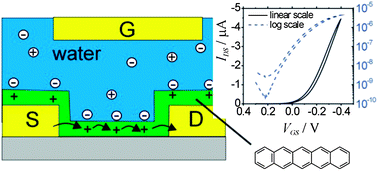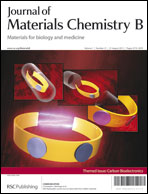Water-gated organic field effect transistors – opportunities for biochemical sensing and extracellular signal transduction
Abstract
There is a quest for electronic biosensors operated in water for biomedical applications and environmental monitoring. Water is an aggressive medium for standard electronics materials and devices due to its strong polarizability and electrochemical activity. Thick dielectric encapsulation provides necessary stability while it damps the sensitivity of the device to sensing events occurring in the aqueous environment. Organic electronics provides materials that exhibit stable electronic conduction in direct contact with water combined with other desirable properties like mechanical softness, biocompatibility and processability onto flexible substrates. In this review, we introduce an emerging class of organic transistors, in which the current across the organic film is gated by the electric field of the Debye–Helmholtz layer. We discuss the device physics, the sensing mechanism and the relevant electrochemical processes. Applications of water-gated transistors range from the sensing of biologically relevant molecules like DNA, proteins or hormones to non-invasive recording and stimulation of electrical activity of neurons. Materials chemistry is crucial to control properties of electrically active films and to allow the introduction of specific chemical functionalities and receptors at sensing interfaces of the device.

- This article is part of the themed collection: Carbon Bioelectronics

 Please wait while we load your content...
Please wait while we load your content...